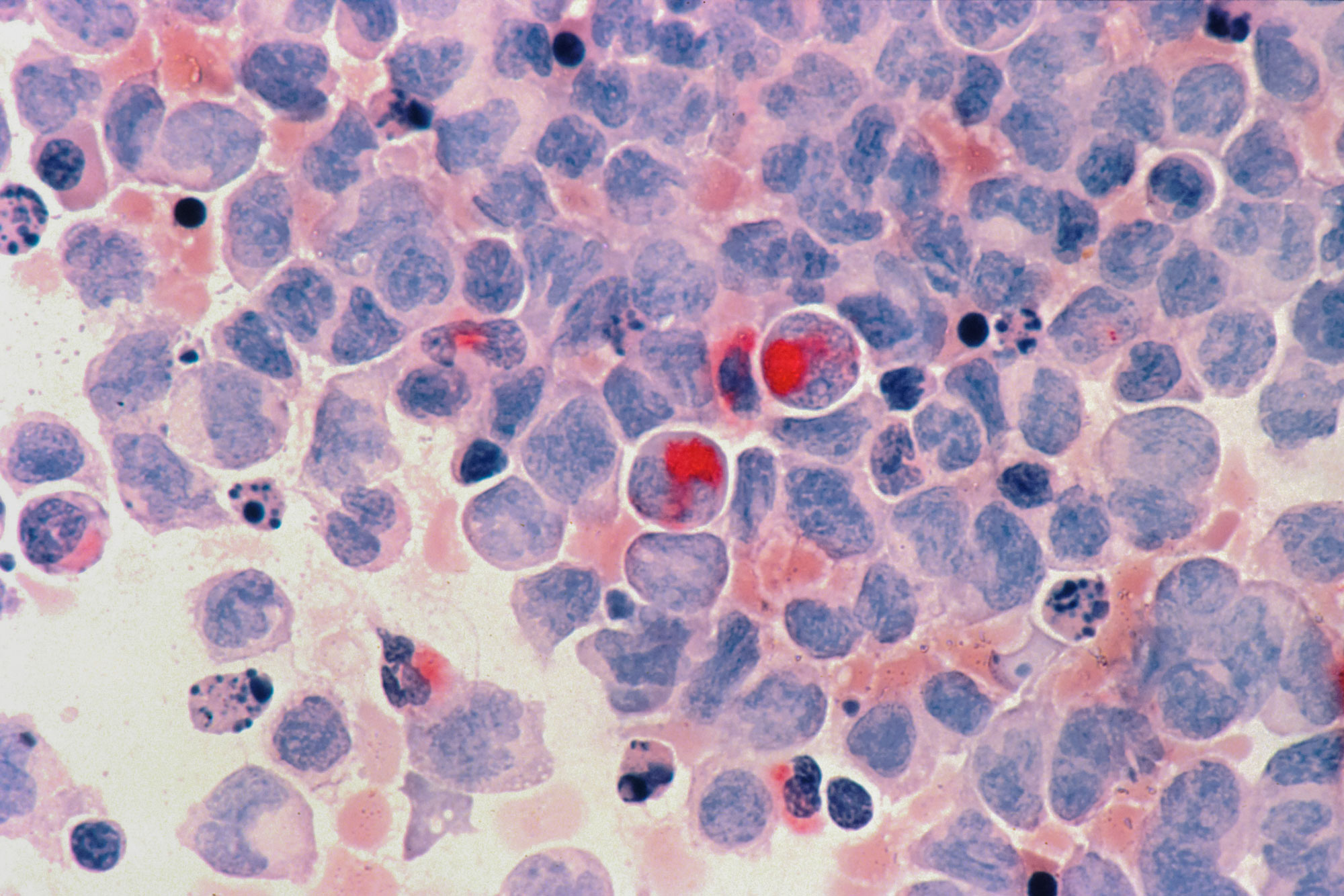Types of leukaemia
Find out about the different types of leukaemia, including chronic and acute. Leukaemia can affect people of all ages and presents in many different forms.

Leukaemia is a cancer of the white blood cells and can be grouped by the type of white cell affected- myeloid or lymphoid.
Leukaemia can also be grouped by the way the disease progresses (acute or chronic). Acute and chronic do not necessarily refer to how serious the disease is but to how rapidly it may progress.
Acute leukaemia means it progresses quickly and aggressively, and usually requires immediate treatment.
Chronic leukaemia means it progresses more slowly and, in some cases, may not require immediate treatment.
The different types of leukaemia are named according to:
1. The type of blood cell which is affected.
2. Whether the leukaemia is acute (faster growing) or chronic (slower growing).
The most common types of leukaemia in adults are acute myeloid leukaemia (AML) and chronic lymphocytic leukaemia (CLL). Rarer forms of leukaemia in adults include acute lymphoblastic leukaemia (ALL) and chronic myeloid leukaemia (CML).
The most common types of childhood leukaemia are ALL and AML, where symptoms can develop more rapidly (acute).
Other blood cancers
The most common types of blood cancer are leukaemia, lymphoma and myeloma. There are other types of blood cancer which are more rare, such as myelodysplastic syndrome (MDS) and myeloproliferative neoplasms (MPNs). With these types of blood cancers, the bone marrow does not produce enough healthy blood cells or too many of one or more specific types of blood cell.
Leukaemia survival rates
Average survival rates also vary based on the form of blood cancer.
Leukaemia survival rates have come a long way in recent history. They have increased from around 13% in the 1970s to around 55% today, thanks to cancer research breakthroughs and advancements in diagnosis and treatments.
At Leukaemia UK, our funded research has played a vital role in improving survival rates. Our researchers are working on a number of research projects to improve the lives of people affected by leukaemia.







